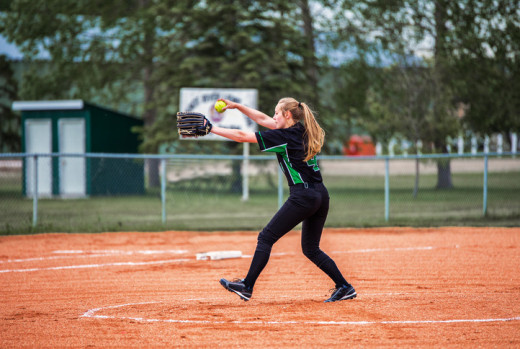- Patient Resources
- Scheduling An Appointment
- Pre-Registering Prior To Your Appointment
- Patient Portal
- Appointment Policies
- Insurance
- Referrals, Workers' Comp & Litigation
- Financial Information
- Preparing For Your Office Visit
- Preparing For Your Surgery or Procedure
- Share Your Medical Images With Andrews Sports Medicine
- Travel & Area Information
- Online Bill Pay
- Financing
- Medical Records
- Prescriptions
- Durable Medical Equipment (DME)
- Injury Prevention
- Purchase Andrews Sports Medicine Gear

Softball Injury Prevention
Softball injuries in young athletes are on the rise and nearly as frequent as baseball injuries, but they generally result in less time lost to competition. These injuries most commonly involve the back, shoulder, forearm, wrist, and hand. Pitchers are not more prone to injury than position players; catchers and in elders have similar injury rates. however, pitcher injuries differ from position player injuries because pitchers use a windmill motion that places unique demands on the back, neck, shoulder, forearm, and wrist.
What Are The Most Common Overuse Injuries in Softball?
For pitchers, the most common overuse injuries are shoulder tendinitis (inflammation of the tendon), back or neck pain, and elbow, forearm, and wrist tendinitis. For catchers, back and knee problems in addition to overhead throwing shoulder problems are the most common. For other position players, overhead shoulder and sometimes elbow problems predominate.
How Can Overuse Softball Injuries Be Prevented?
Overuse injuries are preventable. Some tips to keep young athletes in the game for life include:
- Warm up properly by stretching, running, and easy, gradual throwing.
- Rotate playing other positions besides pitcher.
- Concentrate on age-appropriate pitching.
- Adhere to pitch count guidelines (see tables).
- Avoid pitching on multiple teams with overlapping seasons.
- Flexibility of pitchers needs to be the focus during the season rather than strengthening.
- Don’t pitch with pain, and see a doctor if the pain persists for a week.
- Don’t pitch more than two consecutive days until age 13, and then no more than three days in a row.
- Don’t play year-round.
- Radar Guns should only be used during competition for best pitch of speed vs. change up (ages 15+).
- Communicate regularly about how your arm is feeling and if there is pain or fatigue.
- Develop skills that are age appropriate.
- Emphasize control, accuracy, and good mechanics.
- Speak with a sports medicine professional or athletic trainer if there are any concerns about injuries or prevention strategies.
- Return to play only when clearance is granted by a health care professional.
Maximum Pitch Counts
| Age | Pitches/Game | Pitches/Day Days 1 & 2 |
Pitches/Day Day 3 |
| 8-10 | 50 | 80 | 0 |
| 10-12 | 65 | 95 | 0 |
| 13-14 | 80 | 115 | 80 |
| 15-over | 100 | 140 | 100 |
Rest Periods
Once girls begin to play competitively, they often play two games per day on two or three consecutive days. Two days of rest for pitchers is essential to prevent injuries. additional guidelines include:
Girls < 12 years - only 2 days of consecutive pitching
Girls > 13 years - only 3 days of consecutive pitching
Rest means no live pitches, including batting practice. Pitchers may need to ‘loosen up’ with a flexibility routine on the second rest day and can participate in hitting and field drills.
How Is An Overuse Elbow or Shoulder Injury Treated?
The most obvious treatment for overuse is rest, especially from the activity that created the injury. Ice is also used to reduce soreness and inflammation, and Ibuprofen can be taken to help with any pain. If symptoms persist, it is critical that a rehabilitation professional or physician be contacted, especially if there is a lack of full motion. unlike baseball injuries, most softball overuse injuries do not require surgery, but the care by a professional is advised, especially if pain persists or the injury recurs. Under some circumstances, surgery may be necessary to correct a problem. After a time loss injury, a return to play throwing program should be used (see references).







